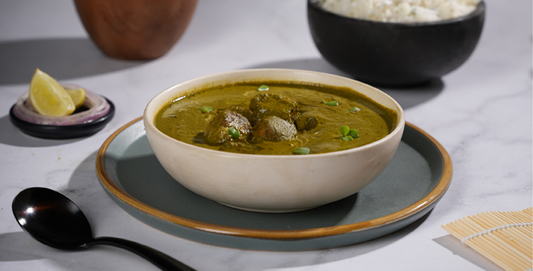What’s evolved?
INCREDIBLY DELICIOUS PROTEIN, MADE FROM PLANTS
A juicy, succulent, whole muscle texture protein made from soy protein, rice protein and coconut fat that can be easily added to your daily meals to make them delicious and nutritious. This versatile ingredient can be added to your favorite recipes without compromising the taste, texture, flavour and authenticity.

“To some, plant-based protein might seem incredulous. We turned that challenge into something incredible!”
Discover how our journey from skepticism to success is reshaping the future of protein. Learn more about our story, mission, and the team behind Evolved.
-

Whole Muscle Texture
Authentic texture that mimics real muscle fibers.
-

Protein Rich
Packed with high-quality protein in every serving.
-

Recyclable Packaging
Eco-friendly packaging you can easily recycle.
-

100% Vegetarian
Completely plant-based, no animal products.
Incredibly Delicious?
From biryanis to kebabs, pulao to chinese, we’ve got you covered. Cook it the way you want & experience the familiar taste of your favourite dish with an Evolved Twist.





Try Evolved at These Top Restaurants
Experience the delicious versatility of Evolved Plant Protein in a range of mouthwatering dishes at these renowned restaurants. Taste how we're transforming plant-based dining!
Discover the Plant-Based Industry
Your Guide to Wholesome & Healthy Living
-

Why should people switch to a Plant-Based diet?
You have to admit, plant-forward diet is trendy right now. Snapchat, Facebook, and Instagram are flooded with posts accompanied by hashtags like #healthyeating and #plantbased. From how it prevents diabetes...
Why should people switch to a Plant-Based diet?
You have to admit, plant-forward diet is trendy right now. Snapchat, Facebook, and Instagram are flooded with posts accompanied by hashtags like #healthyeating and #plantbased. From how it prevents diabetes...
-

Why is Plant Protein gaining an edge?
Protein is an essential part of everyone’s diet, whether you want that muscular bod or flex that fit physique. It forms an important part of our immune system and it...
Why is Plant Protein gaining an edge?
Protein is an essential part of everyone’s diet, whether you want that muscular bod or flex that fit physique. It forms an important part of our immune system and it...
-

A Plant-Powered Journey
I’d like to introduce myself — the before & after versions. Gordon Ramsay was and is someone I still look up to. Beef was my favorite meat. Getting to try...
A Plant-Powered Journey
I’d like to introduce myself — the before & after versions. Gordon Ramsay was and is someone I still look up to. Beef was my favorite meat. Getting to try...
-

Shaken, not Stirred — An Evolved Team BONDing
Let us kickstart the reading with this — “None of us is as smart as all of us.” — Ken Blanchard Teamwork makes the dream work. You must have heard this phrase...
Shaken, not Stirred — An Evolved Team BONDing
Let us kickstart the reading with this — “None of us is as smart as all of us.” — Ken Blanchard Teamwork makes the dream work. You must have heard this phrase...















